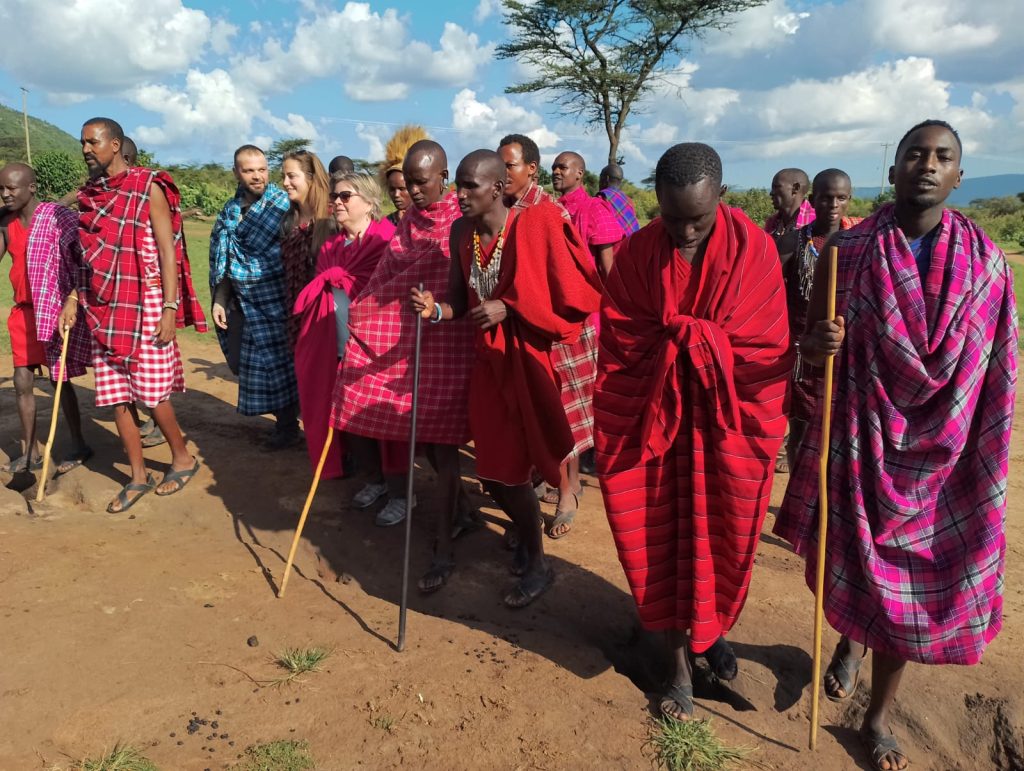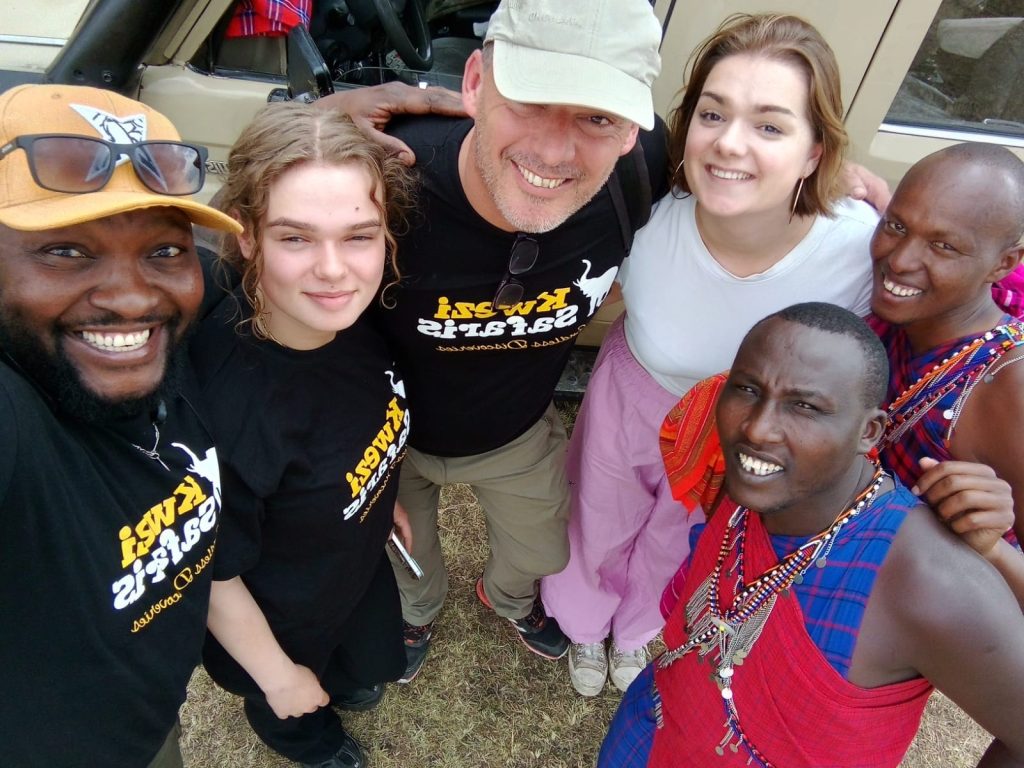Explore the indigenous authentic cultures in Kenya, home to over 44 ethnic communities, each with unique traditions, language, religion and lifestyle.
Kenya is one bundle of rich, different, ever-growing cultures and people. There is the world-famous Maasai, the small El-Molo, the close-knit Mijikenda and many more!
The tribes of Kenya are classified into Bantus, Nilotes, Cushites, Kenyan Arabs and Kenyan Europeans.
Bantus are the largest language group in Sub-Saharan Africa, found in Eastern, Central and Southern Africa. The Bantu languages are slightly similar across different communities and some words may mean the same thing in many groups. In Kenya, the Bantus are grouped into Central Bantus, Coastal Bantus and Western Bantus.
The 3 Iconic Cultures in Kenya
The Maasai People: Most Celebrated Cultures in Kenya

The Maasai ‘People who speak Maa’ are very popular for being one of the few indigenous cultures in Kenya that have retained their traditions to date. Majorly found in southern Kenya near popular national parks such as the Maasai Mara and Amboseli, this iconic tribe which has become a symbol of East Africa, boast of their shield being featured on Kenya’s national flag.
The maa language is generally spoken and not written depicting a firm oral tradition system. The Maasai are famously known for their unique dance called ‘Adumu’ a jumping form of dance done by the Maasai warriors ’Morans’ forming a semicircle with one Moran at a time jumping at the centre while the others hum in unison. Maasai music is vocal comprising choral harmonies and melodies usually sung by the song leader (Olanyarani).

They also identify themselves with their unique dress code and beautiful beadwork and jewellery. Men wear ‘shukas’ cloth wrapped around their bodies while women wear checked or patterned pieces of the same. Colours will vary according to age and gender. Old men usually wear red, black is worn after circumcision. Most of the Maasai shave their heads except for the warriors who are allowed to grow hair. Stretched earlobes are a symbol of wisdom and respect and beaded earrings are worn on the stretched part of the ear.
They live in Manyattas ‘huts ’with a fence made of Acacia thorns enclosing it. The shelters are temporary due to their nomadic nature. Children are tasked with herding cattle, morans defend the community, women construct huts and daily house chores, men fence the kraals while elders make decisions affecting the community.
Livestock is the most treasured asset among the Maasai. Large herds of cattle and many children are a symbol of wealth. They rely heavily on milk, meat and blood. Blood is usually taken during special occasions such as circumcision and also given to the sick. Elders drank blood to stop hangovers or intoxication. Nowadays due to a reduction in livestock and influence from other communities, Maasai are becoming dependent on ugali, cabbage and potatoes.
The Samburu People

This indigenous semi-nomadic community is found in Northern Kenya, south of Lake Turkana. They speak the Maa language and share traditional similarities with the Maasai. The Samburu are often referred to as the ‘Butterfly People’ due to their unique brightly coloured form of dressing, making them the most colourful cultures in Kenya. Each colour has a meaning; white symbolizes purity, yellow and orange signifies their hospitality, and red means courage or danger.
They are known to wear a lot of jewellery mostly anklets, necklaces, armbands and beaded bracelets. This is a symbol of beauty and wealth. The more necklaces a girl has, the more beautiful she is considered. Just like the Maasai, Samburu warriors keep their hair long with red ochre applied to it. Men and elderly women shave their heads completely.
The Samburu live in villages called Manyattas each housing about four to ten families. Due to their nomadic way of life, these manyatta are temporary and are therefore dismantled and mounted somewhere else. The round huts are built using sticks, mud and cow dung and have small partitions in the interior. They are polygamous, decisions are made communally and decision is reserved for the elderly.
Their common food is milk and blood which is supplemented by soup from tubers and other food products such as maize flour that they purchase after selling livestock. Meat is not commonly consumed and reserved for ceremonial purposes. Fishing is not encouraged as fish is considered sacred.

The Samburu believe in a god called Nkai. They also revere two diviners; the community wizard ‘Loibon’ who is consulted during consultation in cases of illness, infertility and cattle plague. The other is the soothsayer who is tasked with rainmaking and dream interpretation.
Just like other traditional cultures in Kenya, the Samburu perform rituals and ceremonies during rites of passage. The most common is the warrior graduation ceremony ‘imugit’ which marks the transition of warriors with 10 years of experience to young elders who are then allowed to marry. Other rituals include the fertility ritual, circumcision and wedding ceremonies.
The Turkana People

This community native to Sudan is found in northwestern Kenya in the Lake Turkana region which is famously known as the ‘Cradle of mankind’ because of the rich archaeological findings in the region. Their name comes from the word ‘Turkwen’ which means people of the caves. They are among the most traditional cultures in Kenya. They are semi-nomadic pastoralists just like the Samburu. The Turkana region is arid and characterized by sandy plains and volcanic rocks.
They live in huts constructed using wood, palm leaves and animal skin. They are a polygamous society and the number of wives a man could marry would be determined by the number of livestock he had.
One distinctive feature of the Turkana is that they do not practice circumcision as a rite of passage like other communities of their kind.
The Turkana dress is simply of a cloth tied on the shoulder for men two pieces of cloth wrapped around the chest and waist. The Turkana women are skilled in working leather and therefore make skirts which are then decorated with beads. They are also known to wear heavy necklaces that can even weigh up to 10kg.

Animal fat is used as a lubricant to avoid rubbing on the neck and is also mixed with red ochre and scented leaves for skin protection from the scorching sun and insects. Women shave their hair on the sides and wear a coat of beads in the centre.
Warriors identify themselves with bun-like hairstyles made with clay and ochre decorated with ostrich feathers. Turkana men are skilled metal workers and make metal necklaces and earrings for different purposes. Warriors identify themselves with bun-like hairstyles made with clay and ochre decorated with ostrich feathers. Turkana men are skilled metal workers and make metal necklaces and earrings worn for different purposes.
Turkana farm and hunt alongside collecting honey. Nowadays they exchange these with neighboring communities to acquire corn flour and other food products. Water is mostly used to quench thirst as it is a rare resource in the land. They minimize using water for cleaning and instead use animal fat to clean the skin.
The Turkana believe in a god called Akuj. The Council of Elders is the decision-making body and presides over communal rituals and ceremonies. Diviners called “emuruon” are consulted during calamities for divine intervention and blessings too.





